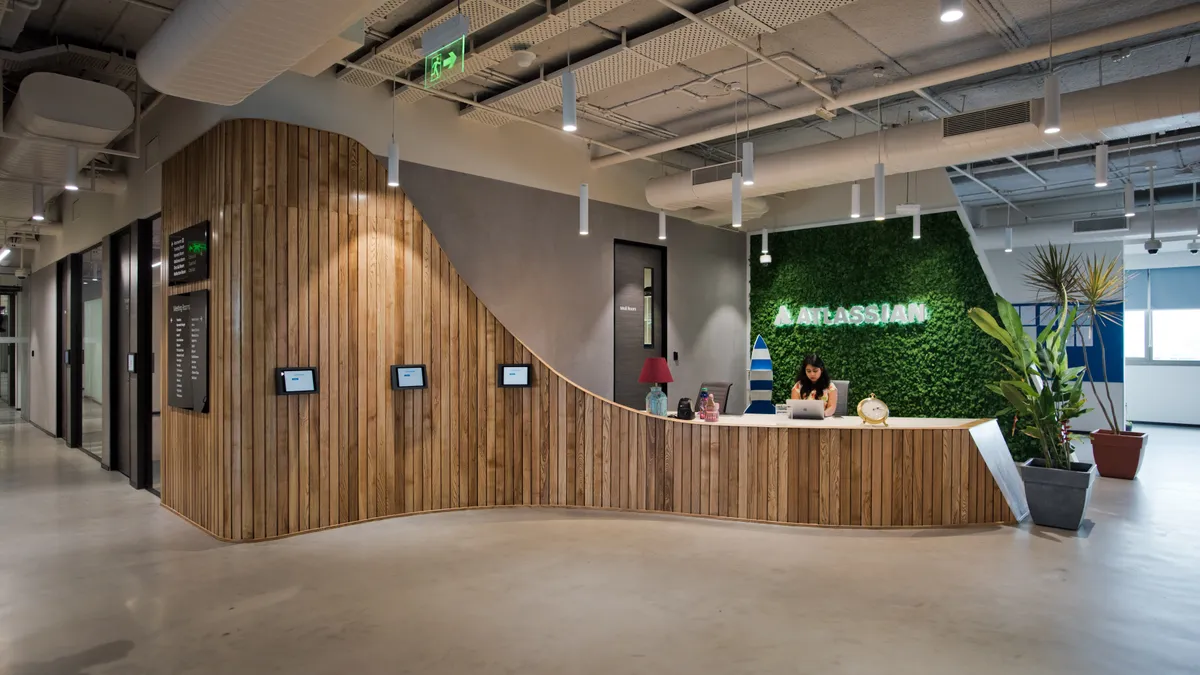Workplace collaboration tech firm Atlassian is focusing on upgrading products and holding on to existing customers — even those facing headwinds — as companies tighten their belts.
The Sydney, Australia-based company, which has a market capitalization of more than $40 billion, last week rolled out a suite of artificial intelligence improvements to its widely-used workplace information and communication platforms Confluence and Jira Service Management, based on internal work and OpenAI’s GPT-4 large language model.
“As tech investment has slowed over the last year, we've seen tech companies hiring less workers and that’s impacted our business as we sell on a per user license model,” said Cameron Deatsch, the company’s chief revenue officer, in an interview at the company’s annual technology conference in Las Vegas last week. “If we're not getting that user upgrade…we just need to focus on providing more products through cross sell, as well as providing more premium capabilities.”

Atlassian, which has more than 250,000 paying customers, has also been quick to retain those facing financial challenges beyond their control including those affected by the Silicon Valley Bank meltdown, he said.
“If you're going through a hard time that you're not in control of, yeah, we're going to take care of you,” he said. “We’re going to make sure you're going to be able to use our software to keep your business running, and we'll keep you as a customer long term.”
Jira, Confluence refreshed
The AI-based enhancements will be embedded in products that include workplace collaboration tool Confluence and Jira Service Management, a program that allows teams to track, plan, assign, track, report, and manage work. Within Jira Service Management, use cases for the new AI capabilities will include virtual agents that automate support interactions from within Slack and Microsoft Teams. Within Confluence, the technology will also allow employees to query unfamiliar terms, and get answers based on input pulled from repositories of internal documents.
The company’s product focus, coming out of the pandemic, is on supporting asynchronous team activity, as opposed to an emphasis on video collaboration and messaging, said Deatsch.
As the company focuses on product enhancements to retain customers, Atlassian laid off 5% of its 10,000-member workforce in March. Teams most impacted included talent acquisition and program management, as well as research and insights, according to a company blog post.
The company is also reviewing vendor relationships in an effort to find efficiencies, focusing more on cost control versus eliminating vendors, he said.
CRO-CFO as peers
Deatsch, who has been with the company for 11 years, most recently as head of its server business, is responsible for customer-facing and go-to-market functions, including sales, marketing, customer success and support. At the executive table, he sits as a peer to the CFO, with whom he works closely on investment priorities and monitoring results.
One approach that sets the company apart from some of its competitors, he said, was a bigger focus on research and development. “We invest more in R&D, and less on sales and marketing than most of our peers, and we combine that with relatively low-cost pricing.”
Atlassian, according to Deatsch, spends roughly 35% of its revenue on research and development and 15% to 20% on sales and marketing, differing from a more even split of the two that he said is more typical of the industry.











